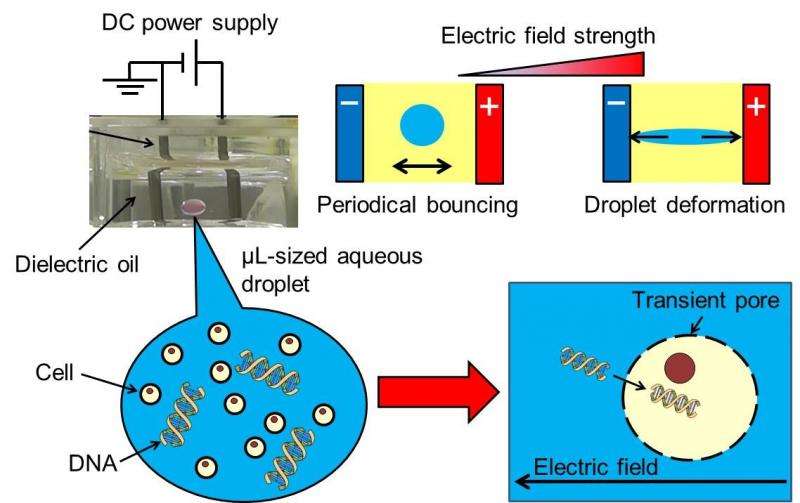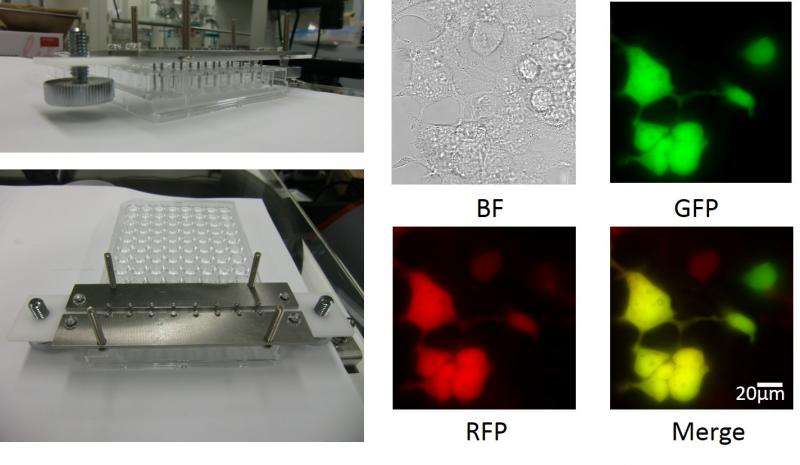New innovative method for delivering genes into cells

Living cells express genes involved in physiological functions like development and metabolism via complex mechanisms. The cell membrane protects the genome from various exogenous molecules. Cell transfection is a fundamental technique that is used to deliver molecules, such as nucleic acids, proteins, and drugs, into living cells. The technique has been implicated in the development of a broad spectrum of life science applications.
Electroporation is a popular technique for the delivery of cell-impermeable molecules into cells through transient pores in the cell membrane, which are formed by exposing cells to electric pulses. However, most commercial electroporation-based transfection methods require the use of specialized pulse generators to produce short electrical pulses at high voltage.
Now, researchers at the Department of Environmental and Life Sciences and Electronics-Inspired Interdisciplinary Research Institute (EIIRIS) in the Toyohashi University of Technology have developed a novel gene-transfection method: water-in-oil (W/O) droplet electroporation with sufficient transfection efficiency and cell viability. In this method, when a liquid droplet suspended between a pair of electrodes in dielectric oil is exposed to a direct current (DC) electric field, the droplet moves between the pair of electrodes periodically and deforms under the intense DC electric field (Fig. 1).
The first authors, Assistant Professor Hirofumi Kurita and Professor Akio Mizuno, said, "W/O droplet electroporation is operated using a DC power supply, which obviates the need for an expensive pulse generator. In addition, the size of the droplet is quite small compared with that in conventional bulk electroporation, resulting in the use of fewer materials in high-throughput analysis."
Associate Professor Rika Numano explained, "The W/O droplet electroporation technique has several advantages over conventional transfection techniques: small cell number required, as low as 1000 cells; small amount of DNA required, which makes it applicable for various cell types including neural cells; and changeable genome DNA. There have been improvements in W/O-droplet electroporation electrodes for use in disposable 96-well plates for concurrent performance (Fig. 2). The W/O droplet electroporation technique can contribute to further biomedical innovation in high-throughput screening with a large number of samples for applications in regenerative medicine and gene therapy."

More information: Hirofumi Kurita, Shota Takahashi, Atsushi Asada, Minako Matsuo, Kenta Kishikawa, Akira Mizuno, and Rika Numano (2015). Novel Parallelized Electroporation by Electrostatic Manipulation of a Water-in-oil Droplet as a Microreactor: PLOS ONE: 10.1371/journal.pone.0144254
Journal information: PLoS ONE
Provided by Toyohashi University of Technology



















